Hospital Health Information Management System
Description
HHIMS is an open-source medical database software designed for use in Sri Lanka hospitals. Basically it stores the clinical details of patients treated and is designed to be used by clinical staff on-line – that is as they are actually seeing or have just seen the patient. The system allows hospital staff to see the previous clinical record when the patient comes again, prints visit slips or discharge letters for patients to take home, prints quarterly health statistics and prepares notifications of infectious diseases for the local Medical Officers of Health. The software will allow hospitals to abandon some of their paper records resulting in greater efficiency. System is: helping decision makers to detect and control emerging and endemic health problems, monitor progress towards health goals, and promote equity; empowering individuals and communities with timely and understandable health-related information, and drive improvements in quality of services; strengthening the evidence base for effective health policies, permitting evaluation of scale-up efforts, and enabling innovation through research; Improving efficient use of resources by way of effective stock controls Improving clinical quality by way of making available clinical information with out delay (eg. Drug allergies, previous medications, results of previous investigations etc.) improving governance, mobilizing new resources, and ensuring accountability in the way they are used.
What we deliver
For the patients- maintenance of a complete electronic medical record at hospital Reduction in waiting time. For the doctors- Medical records of patients are easily available and can be retrieved easily as all details are stored electronically. Very much quicker than searching manfully for paper records Prescribing of drugs shows all drugs available in the hospital and the current stock. Allows more rational, economical practices Ordering of lab tests and availability of results as soon as the test is done- Availability and previous medical records prevent unnecessary duplication of investigations. Immediate availability of results is very important in critical care situations. Improves the quality and safety of care Electronic notifications of communicable diseases- this instant notifications by e mails allows timely action to be taken. Production of discharge summaries (diagnostic cards ) electronically saves doctors time and lead to better quality medical records. For the pharmacists- electronic prescriptions gives them clear instructions ( most of the time doctors hand writing are illegible) Automatic balancing of drug stocks Reduction in paper work Help to minimize pilferage and better stock control For the medical lab technicians- reduction in paper work gives them more time to concentrate on technical aspects Safety of results- as results are stored electronically unauthorized access is denied. If wanted duplicates can be issued very easily. Statisticians quick production of statistics needed. For the first time in Sri lanka out door patients morbidity data can be obtained. For the administrators Allows remote monitoring Better supply chain management Morbidity and mortality data can be easily obtained. Gives timely information regarding epidemiological transitions Job e enrichment / enhancement of employees via use of ICT.
Whom we deliver
Healthcare professionals at government hospitals in Sri Lanka including Doctors, Nurses, Professions supplementary to medicine (medical lab technicians, pharmacists etc.) , Statisticians, Office staff, Minor employees.
Why is the project unique?
Yes, it certainly represents a new approach to an existing problem. To-date any improvement introduced to the existing health care system in the Country was paper based and it did not resolve problems such as retention of historical patient records/ data or the overcrowding of hospitals and timely updating of stocks of drugs and other related items. Moreover it also did not address the need to expedite the compilation of reports such as the IMMR and notification of modifiable diseases. Through the traditional system the preparation of an IMMR would take up to several years. Notifications are supposed to be done as soon as a tentative diagnosis is made to enable the preventive sector (Medical Officers of Health) to take preventive action but since it is done on paper and sent via snail mail it takes weeks. Electronic notifications on the other hand are instantaneous. . Innovation was needed to streamline the existing systems and procedures such that patients spent less time in hospital queues, in order that the accurate diagnosis and treatment by is enabled by giving the doctor access to historical data and records. From a hospital administration and managerial point of view it was needed to reduce the huge paper records that were growing in all hospitals taking up valuable space and consuming overheads. Importantly it was also necessary for ensuring that the hospital did not run out of any vital drugs or other related health care item. The system provided for effect.
Roadmap
To implement this software in other government and private sector hospitals. Popularize the use of software among general practitioners. 1. Government policy to implement electronic health records by 2020 ( we can achieve this before that) 2. allocation of necessary funding for medical informatics by the provincial health authorities 3. Training of doctors in medical informatics by the ministry of health and the PGIM 4. Govt policy to achieve IT literacy rate of 75% among government employees by 2015 5. As the software is developed in Sri Lanka future improvements and maintenance can be done at a low cost.
Contact
Information Communication Technology Agency of Sri Lanka
D.P.S.R. Jayasinghe, Project Manager
160/24, Kirimandala Mw., Col-5 Colombo, Sri Lanka 100000
URL/Website – http://www.hhims.org/





